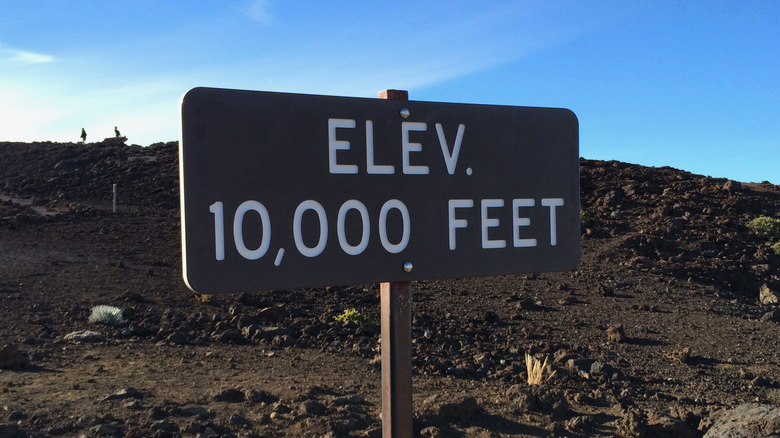This Is How Altitude Affects Baking
Everything affects the outcome of a specific baked good, from the quality of the ingredients to the length of cooking time. But did you know that altitude also plays a massive role on whether that souffle rises ever so perfectly, or falls totally flat? So, if you have a trip or move planned to Colorado or somewhere like it, remember these tips to adjust your kitchen-related adventures.
A place is considered high altitude if it's between 8 and 12,000 square feet above sea level, per Cleveland Clinic. Many mountain homes are well within that range, but some large cities are, as well, usually those in mountainous regions. What's more, cooking can be affected much lower than that, at "only" 3,000 feet above sea level, says the U.S. Department of Agriculture (USDA).
Due to these effects, it's important to adjust cooking steps ever so slightly in order to produce quality baked goods. Here's how to ensure that your cookies, cakes, and more come out perfectly when you're cooking at high elevation — and exactly why high altitude affects baking in the first place.
How to adjust when baking at high altitudes
The aspect of high altitude that often wrecks cooking is the lower air pressure. According to MentalFloss, reduced air pressure means liquid molecules evaporate at lower heats. Plus, breads and cakes contain leavening gases, and these expand more at higher elevations, says USDA.
Fortunately, there are a few steps that are easy enough to take when baking at high altitudes. Betty Crocker suggests the following tweaks, which all depend on the exact dessert you're baking. To cook quick breads, for example, you're going to want to increase the temperature of the oven by 15 to 25 degrees Fahrenheit. You can also increase flour and water by a couple of tablespoons, and lower the amounts of sugar, fat, and baking soda/powder.
For brownies, reduce oven temp by about 25 degrees Fahrenheit (so, if the recipe calls for 350, preheat to 325). Reduce oil and increase flour and water by a tablespoon or two. Then, bake for an 10 extra minutes. When it comes to cakes, add a couple of tablespoons of extra liquid and flour, then reduce oil/shortening and baking soda/powder. Increase bake time until it's as done as you want it to be. Cookies may take a minute or two less or longer, depending. So keep a close eye on the first batch and note how long they're in there. Also, reduce butter, shortening, and sugar (or add flour) if the cookies spread out too much. If they don't spread enough, add a couple tablespoons of liquid.
Happy baking!

